***This article originally appeared in the January ’23 issue of Animation Magazine (No. 326)***
Inna Sahakyan’s astonishing feature Aurora’s Sunrise has been receiving global attention and critical raves since it premiered at Annecy in June. The film, which uses archival footage and animation, is also Armenia’s official entry for the International Film Oscar this year. Penned by Sahakyan, Kerstin Meyer-Beetz and Peter Liakhov, it centers on the unbelievable experiences of Aurora Mardiganian, who suffered awful losses during the Armenian genocide, but escaped to New York and became a media sensation after starring as herself in the Hollywood blockbuster Auction of Souls. We recently had the great opportunity to interview the Sahakyan about her eye-opening movie:
Animation Magazine: Congrats on all the acclaim your wonderful movie has been receiving in the past few months. Can you tell us how you got involved with this amazing project and learned about this fascinating story?

Inna Sahakyan: I was doing research for a documentary series at Zoryan Institute’s Armenian Genocide Oral History archive back in 2014, and I discovered Aurora’s five-hour-long testimony recorded back in 1984, when Aurora was 83 years old. Her story was so unique: She passed through the Armenian genocide as a teenage girl and became a silent movie Hollywood star, relieving her pain on the silver screen, only to help our nation. The elderly Aurora was also such a great storyteller that I knew the world needed to hear her story, and so I started to work on the film idea.
When did you decide that you needed to use animation to tell the story?
I had three great video testimonies from the real-life Aurora, and 18 minutes of sequences from her 1919 silent movie Auction of Souls (a.k.a. Ravished Armenia), but that was not enough for visualizing her story. It was here when the idea of animation came to us. Animation is a medium that can communicate not only the colors of the story, but even its smells, tastes and textures. It becomes the soul of the film, and lets Aurora’s now forgotten story become vivid again. It goes further than reproducing the events: it interprets them, like our brain does with memories, and allows symbols and motifs to speak loudly instead of drowning them in the utter realism of hundreds of details.
Please tell us about the animation production and the cut-out technique you used?
Due to limited budget, from the beginning we decided that we will do CG paper cutout animation. But at the same time, understanding that we will have limited movements, our artistic team decided to have realistic illustrations with the combination of Armenian colors and Hollywood chic in an art nouveau style. To make movements in cutout technique and illustrations more lifelike, we had to film all animated scenes over the greenscreen, and then choose specific frames that were illustrated and animated. I am very thankful to my great teams in Armenia and Lithuania for their patience in bringing to life all our creative ideas. I believe this style unifies all other mediums presented in the film.
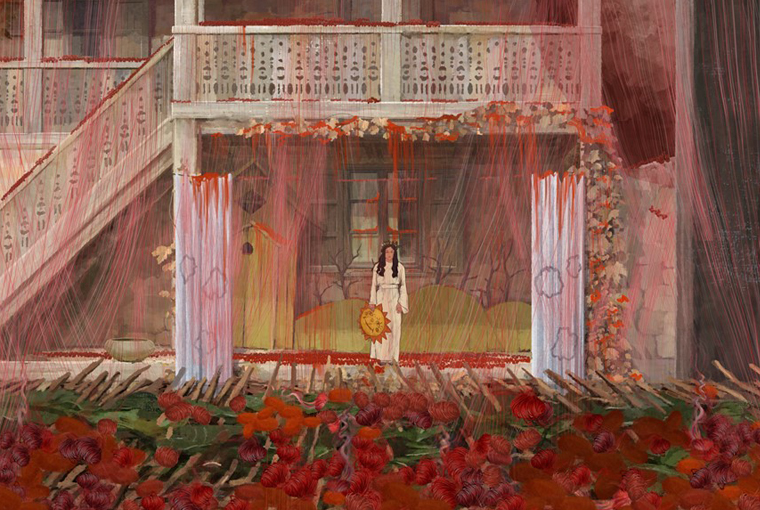
How long did it take to complete the animation?
About three years, as we had to work distantly with our Lithuanian colleagues due to COVID. Moreover, in September 2020, a new conflict began over Nagorno-Karabakh — a region disputed between my country, Armenia, and Azerbaijan since the collapse of the U.S.S.R.
Armenia went through 44 days of fighting, it was nothing less than a state of total war. By the time a ceasefire was signed, our tiny country of only 3 million had lost more soldiers per capita than the United States did in WWII. During the conflict, all of the men on my Armenian staff were on the front lines, some under direct fire. The strain of the war put the entire project in jeopardy, but thanks to the perseverance of the German and Lithuanian co-producers, the project kept moving forward.
What are you proudest of as you look back at the movie?
My primary purpose was to let Aurora tell her own story and rise as a strong woman role model who kept her humanity despite the inhuman circumstances. I wanted to put Aurora alongside figures such as Anne Frank, Malala Yousafzai and Nadia Murad as a champion of human dignity. I hope that I was able to fulfill that purpose.
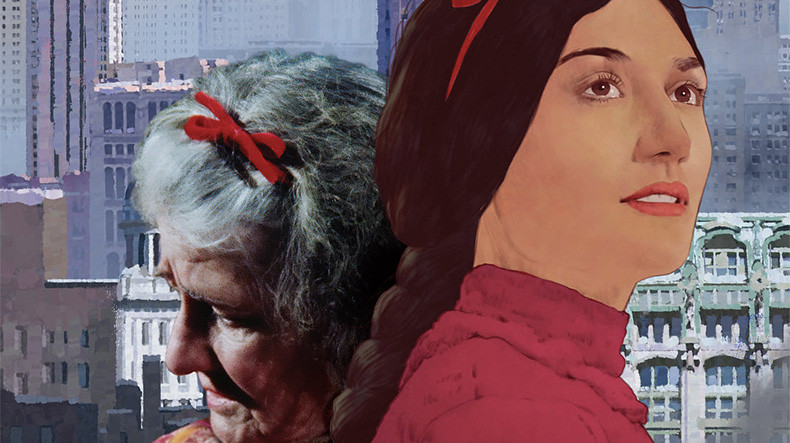
What were your biggest challenges?
For many different reasons, the film’s production took over seven years. This was a big challenge itself, but during this process we constantly faced the issue of how to tell Aurora’s extraordinarily complicated story spanning over five years, different continents and challenging historical events in only 90 minutes and keep the audience’s interest. And how to tell this incredible story and, at the same time, remain truthful as documentarians? I hope I found the right solution.
Who are your biggest animation influences and heroes?
My inspirations were so different, starting from the amazing art of Aleksandr Petrov (The Old Man and the Sea is my favorite) up to anime’s great master Hayao Miyazaki. But of course, they did not have much direct influence in the animation/illustration style of Aurora’s Sunrise. I was very inspired by other animated documentaries, most of all Waltz with Bashir and Persepolis and how they share personal traumatic stories and historical events through animation.
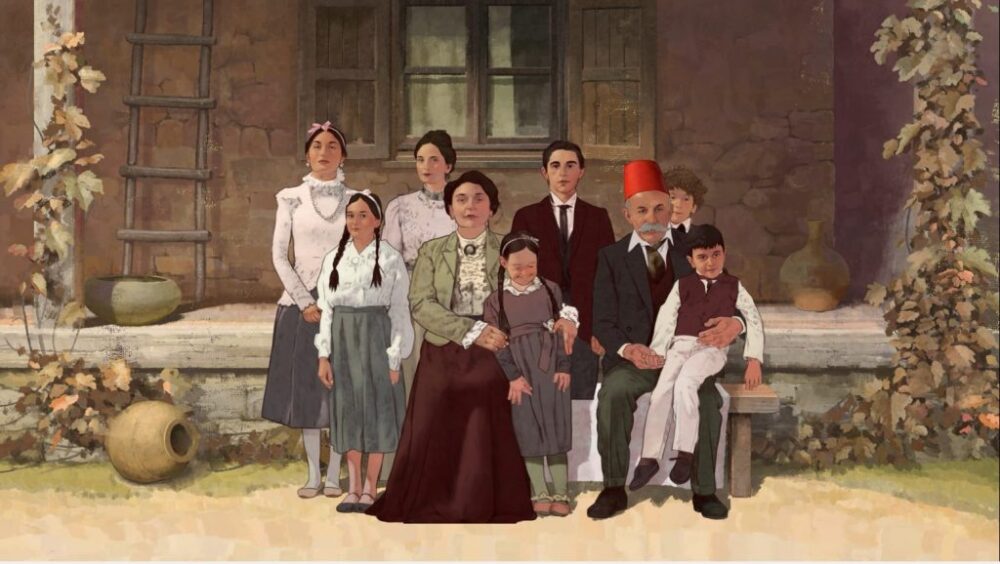
The Armenian community has shown great support for the movie … what was the most moving response you have received from audiences?
The Armenian Genocide is a common pain for all of us — since it’s not recognized by Turkey, it remains an unhealed wound. The most touching thing is people sharing with me their own personal, untold stories of their great-grandparents, the ones which are so painful for them to share out of the family’s past. They start to talk … The most difficult aspect of showing the film to the Armenian audience is that the film reveals the heavy history of our ancestors, while simultaneously our kids face the same horrors in the current geo-political situation in my country with the wars waged against us.
How do you feel about your movie being Armenia’s official entry in the Oscar race?
It’s an extraordinary honor for me and for our team to have our film selected as our country’s submission to the Academy Award. And this is symbolic, since now Aurora is back in Hollywood again. This achievement emphasizes the importance of our movie as a social statement. In fact, participation in the Oscar race is a big opportunity to increase the media coverage of Aurora Mardiganian’s story. This aspect is more important for me than any personal awards or recognition. We need to maximize the film’s audience, and the Oscar is an excellent platform for this.
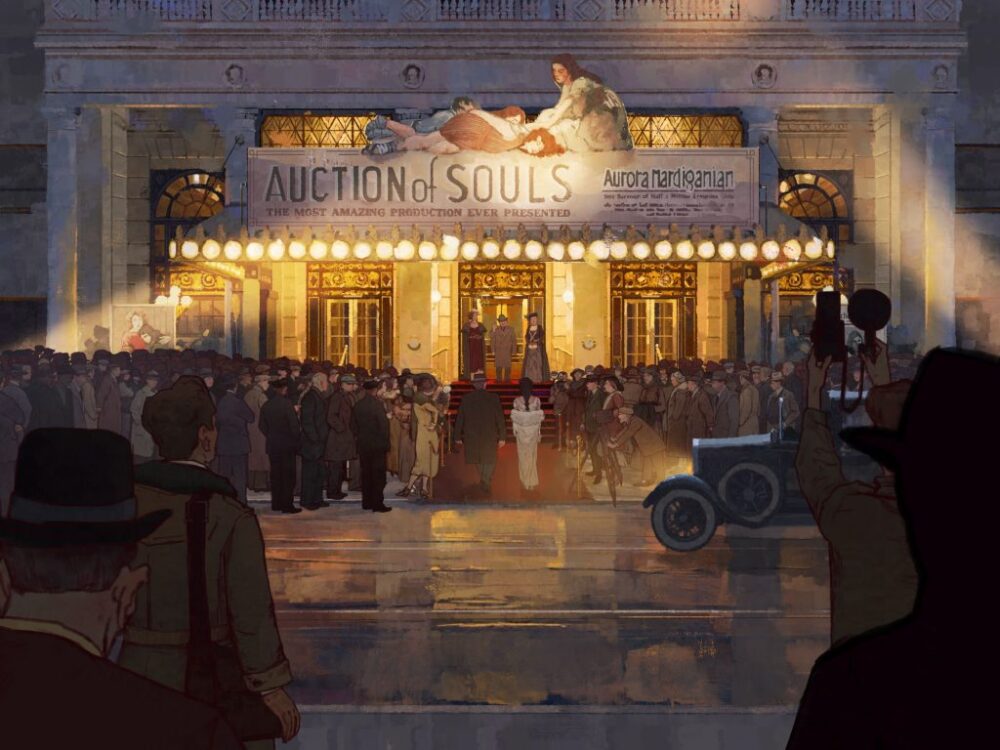
What do you hope audiences take away from your movie?
I hope that the audience will see Aurora the same way as I see her: the brave young woman who went through genocide, hunger, slavery and exploitation, but refused to be a victim. She refused to be swept away by the tides of history. It’s a timeless story about the resilience of the human spirit, the power of hope and the importance of never giving up. In our evermore uncertain world, when similar stories are still happening, the message of striving for humanity and staying devoted to your own beliefs is the most important thing that audiences can take away.
Aurora’s Sunrise is an Armenia/Germany/Lithuania co-production, produced by Bars Media, Artbox Laisvalaikio Klubas and Gebrueder Beetz Filmproduktion, with research and financial support from the Zoryan Institute. For more information, visit zoryaninstitute.org/auroras-sunrise.


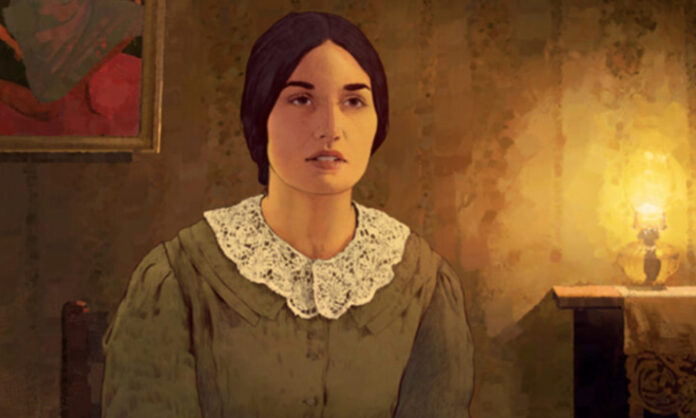

 Win a Funko X Lilo & Stitch Prize Pack!
Win a Funko X Lilo & Stitch Prize Pack! 
